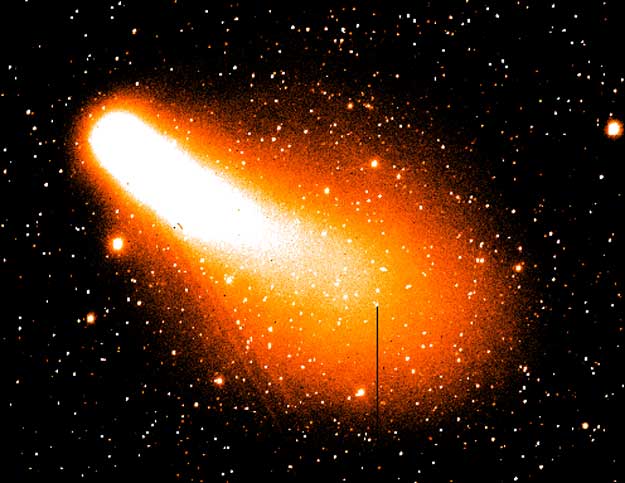Explanation: A comet bright enough to be seen with binoculars is swooping into southern skies. Comet C/2000 WM1 (LINEAR) continues to brighten and develop tails as it nears its closest approach of the Sun in late January 2002. Comet LINEAR WM1 was discovered over a year ago when it was out past Jupiter and still very faint. In the above picture from the Curtis Schmidt 0.6-meter Telescope in Chile, a 30-second exposure in red on December 4 captured detail in Comet LINEAR WM1's emerging dust tail. Optimistic sky watchers hope that Comet LINEAR WM1 will undergo an even greater (and unexpected) brightening to the point where its coma and tails are easily discernable to the unaided eye. Comet LINEAR WM1 is being watched with particular interest by astronomers because its ion tail might yield clues to understanding the solar wind expelled from near the Sun's poles.
1999 2000 2001 2002 2003 2004 2005 2006 2007 2008 2009 2010 2011 2012 2013 2014 2015 2016 2017 2018 2019 2020 2021 2022 2023 2024 2025 |
Yanvar' Fevral' Mart Aprel' Mai Iyun' Iyul' Avgust Sentyabr' Oktyabr' Noyabr' Dekabr' |
NASA Web Site Statements, Warnings, and Disclaimers
NASA Official: Jay Norris. Specific rights apply.
A service of: LHEA at NASA / GSFC
& Michigan Tech. U.
|
Publikacii s klyuchevymi slovami:
comet - kometa LINEAR - southern sky - Comet Linear WM1 - komety
Publikacii so slovami: comet - kometa LINEAR - southern sky - Comet Linear WM1 - komety | |
Sm. takzhe:
Vse publikacii na tu zhe temu >> | |
